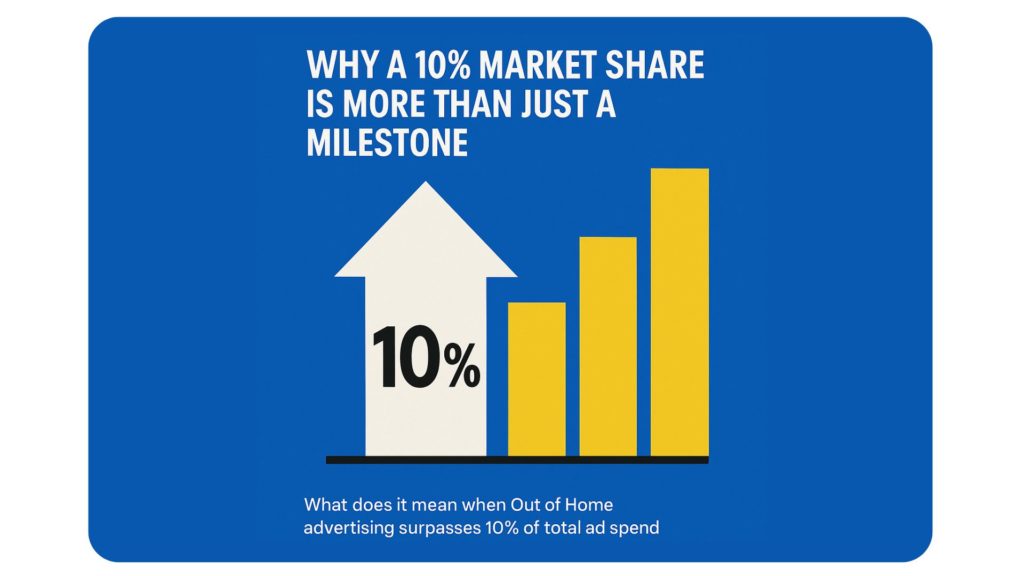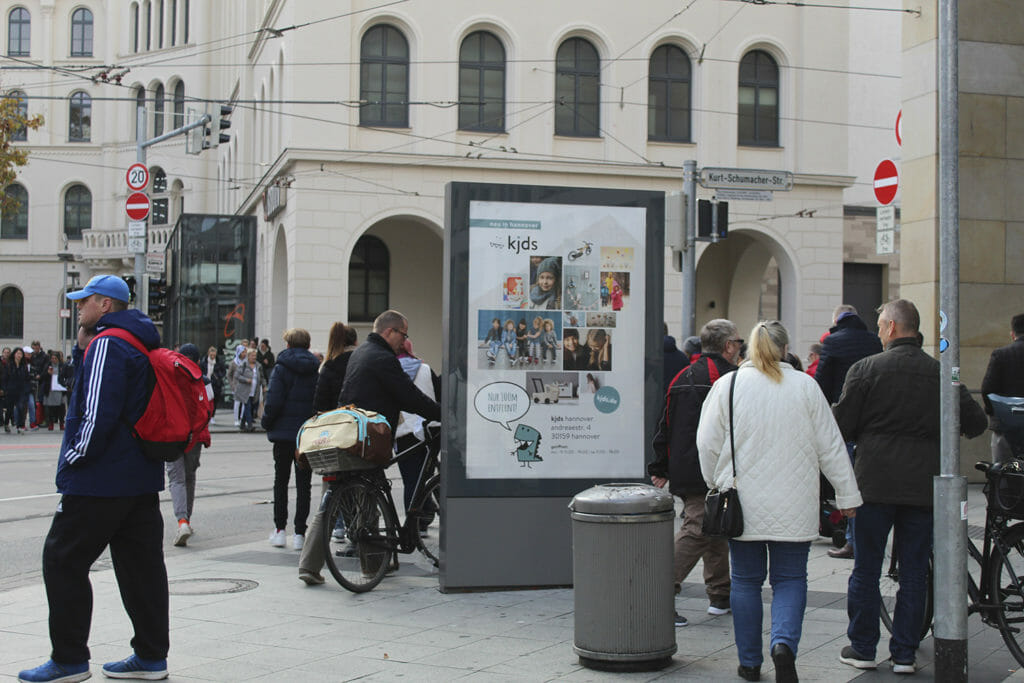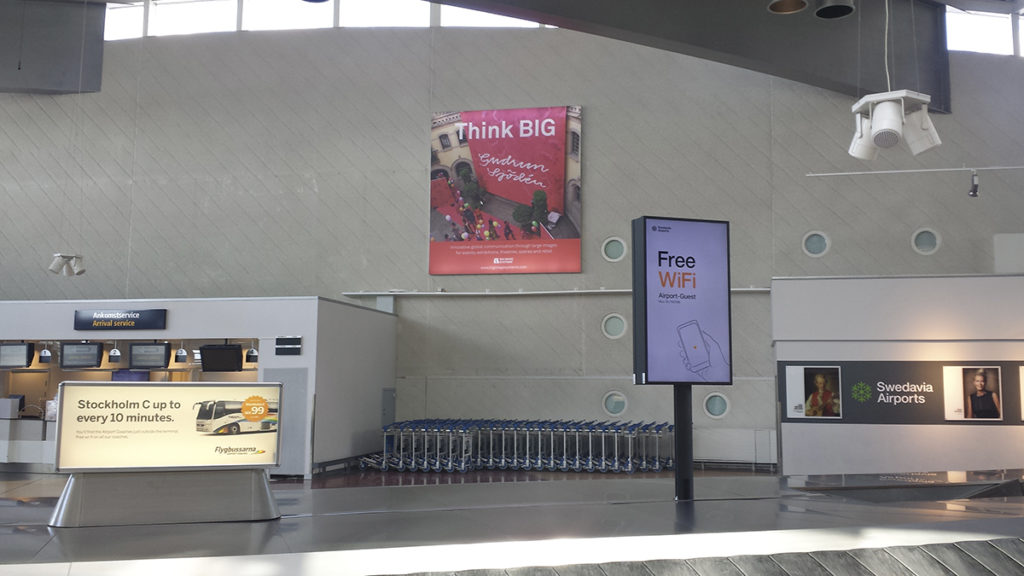Out of Home 2025 Germany: Why a 10% market share is more than just a milestone
What does it mean when Out of Home advertising surpasses 10% of total ad spend for the first time (Germany) and what should brands do now?
The media landscape is changing, and Out of Home (OOH) advertising is gaining significant ground. In the first half of 2025, OOH reaches over 10% market share for the first time in the German advertising market. This figure is more than just industry news, it’s a wake-up call for marketing decision-makers to rethink their budgets!
What’s behind the OOH boom?
- The media mix is shifting
According to Nielsen, overall advertising spend is stagnating at around €16.3 billion. But while many media categories are losing ground, OOH grows strongly by 10.6% to €1.6 billion. This means advertising budgets are being reallocated rather than newly invested, primarily moving away from TV (-€223 million) and online (-0.7%) towards Out of Home. - Digitalization turns OOH into a performance channel
OOH has evolved from classic billboards into a digital real-time platform. DOOH (Digital Out of Home) inventory is now bookable programmatically, flexible, and delivers real-time content. Brands can target audiences precisely in public spaces where attention is highest. Digital Out of Home has thus become the “online of the streets,” ideally complementing campaigns with video, reach, and contextual relevance.
What is the concrete added value for advertisers?
- High reach meets strong advertising impact
Studies show that OOH consistently achieves high contact rates across all target groups and scores well on ad recall, brand image, and purchase intent. The return on investment (ROI) is above the industry average, especially when combined with TV or online campaigns. - Sustainability as a competitive advantage
Sustainability becomes measurable: Two studies by the German Out of Home Association (2023/24) prove that shifting budgets to OOH not only increases ROI but also significantly reduces the carbon footprint of campaigns. Brands can therefore increase effectiveness and act more climate-friendly without extra costs.
What should brands do now? 3 recommendations for action
- Review your media strategy: Visibility is crucial in a fragmented market. OOH offers high reach locally, regionally, and nationally.
- Use DOOH strategically: Leverage programmatic booking and dynamic content to respond flexibly to target groups and times of day.
- Drive data-based optimization: Use available data from programmatic Digital Out of Home and insights to continuously analyze and adapt campaigns. This boosts efficiency and achieves better results.
Conclusion: OOH has grown
Out of Home has developed into a modern and powerful advertising channel and is now an integral part of future-proof media planning. The 10% milestone is not an end in itself, but a signal: brands and companies that act now will secure reach and relevance in public spaces.






